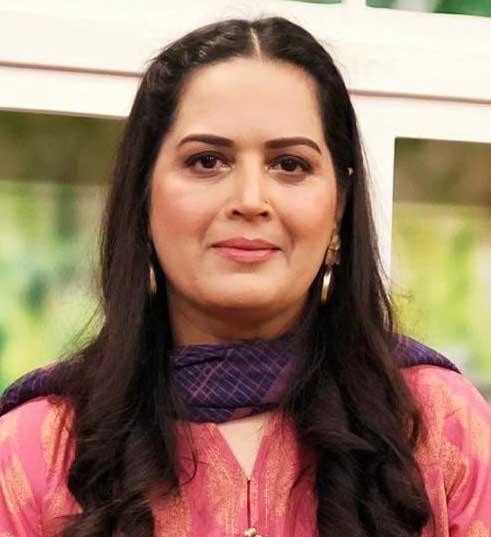Sindhi culture and cuisine are a significant part of Pakistan’s history and heritage. The land of Sindh is renowned for its ancient civilization, customs, and distinctive foods. This culture is a part of Sindh’s rich legacy, with roots that go back thousands of years, reflecting the essence of the ancient Sindhi civilization.
Hospitality and love hold a special place in Sindhi culture. The people of Sindh are known for their hospitality, and it is a tradition that every guest is offered food and drink. The people of this region warmly welcome their guests with sincerity and affection. Sindhi people keep their culture alive through their cuisine during weddings, festivals, and fairs.
Simplicity and natural flavors are important in Sindhi cuisine. The people here prefer simple, homemade dishes that use natural ingredients. Different foods are prepared in Sindh according to the season, using seasonal ingredients. These foods are not only flavorful but also healthy.
Fish, meat, lentils, and vegetables are commonly used in Sindhi cuisine. A large part of Sindh’s population lives along the banks of the Indus River, which is why fish is commonly consumed here. Sindhi fish curry, fish kebabs, and rice with fish curry are well-known dishes. Additionally, vegetables such as mustard greens, okra, gourd, and eggplant are commonly used in Sindh. These vegetables are prepared in various ways to enhance their flavor.
Lentils also have an important place in Sindhi cuisine. Sindhi lentils include mash dal, masoor dal, and chana dal. These lentils are cooked with various spices and are often served with bread or rice. Sindhi dal chawal is a famous and popular dish that is made in every household.
Sindhi meat dishes are also renowned for their taste and unique flavor. Sindhi biryani is a famous dish that is popular across Pakistan for its unique spices and flavor. Other well-known dishes include Sindhi korma, Sindhi haleem, and Sindhi karahi, which are typically prepared on special occasions.
Traditional sweets are also part of Sindhi cuisine. Ladoo, made from gram flour and ghee, is a popular sweet dish in Sindh. Other Sindhi sweets include sattu, malpura, and date sweets. These sweets are prepared on special occasions and offered to guests.
Tea and lassi also hold an important place in Sindhi culture. Tea is a part of the daily life of Sindhi people, and its consumption is common in every household. Sindhi tea is prepared with milk and tea leaves, sometimes with added spices. Similarly, lassi, a favorite drink made from yogurt and water, is particularly consumed during the summer.
Festivals and fairs have a significant place in Sindhi culture. These festivals strengthen the roots of Sindhi culture and bring people together. Sindhi people celebrate their festivals with great enthusiasm, and special foods are prepared during these festivals. The famous festival of Eid al-Fitr in Sindh involves the preparation of various dishes and the gathering of relatives and friends. Other traditional Sindhi fairs include the Mela Char Soo, Mela Shah Abdul Latif Bhittai, and Mela Sachal Sarmast, where people wear traditional attire and showcase their arts.
Sindhi attire is also an important part of this culture. Sindhi men wear shalwar kameez and Sindhi caps, while women wear colorful garments, including gharara, choli, and ajrak. Ajrak is a symbol of Sindh’s identity and is worn as traditional clothing and also given as a gift. The history of ajrak is ancient, and it is crafted with great care and love.
Sindhi music is another important part of Sindhi culture. Traditional instruments like the rabab, flute, and dhol are used in Sindhi music. The poetry of Shah Abdul Latif Bhittai and Sachal Sarmast holds a special place in Sindhi music. Their poetry is presented with music and holds a special place in the hearts of Sindhi people. Sufi poetry also has an important place in Sindhi music, providing spiritual solace to people.
Handicrafts also hold a significant place in Sindhi culture. Sindhi handicrafts are famous for their beauty and delicacy. These crafts include Sindhi embroidery, carpet weaving, and Sindhi cap making. Sindhi women excel in embroidery and create beautiful embroidered fabrics by hand. Similarly, Sindhi carpets are known for their finesse and beauty. The Sindhi cap, which is a part of Sindhi culture, is also specially made and worn on special occasions.
Sindhi culture and cuisine combine simplicity with charm. This culture reflects the land of Sindh and keeps its history and heritage alive. The people of Sindh keep their culture alive through their food, clothing, music, and handicrafts and work to promote it. Sindhi culture is a part of Pakistan’s beauty and diversity and needs to be preserved.
Sindhi food and culture reflect the ancient history and heritage of Sindh. These foods are characterized by simplicity and natural flavors, while Sindhi culture is famous for its unique colors, music, and handicrafts. The people of Sindh are known for their hospitality and love, and they always strive to keep their culture alive. The land of Sindh will always remain vibrant due to its beauty and heritage, and its culture will continue to be a part of Pakistan’s beauty.





